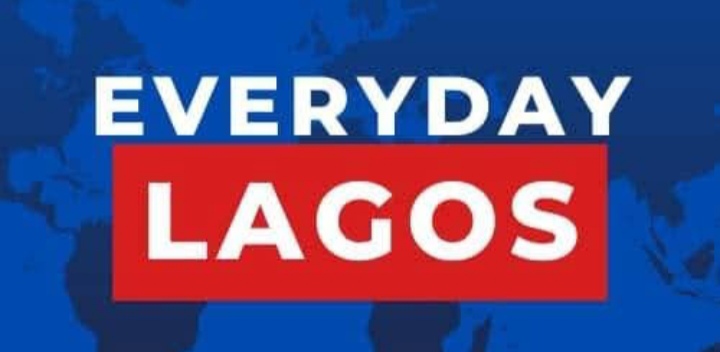In January 2021, Barrister Nyesom Wike as governor of River State publicly applauded former President Muhammadu Buhari-led administration for reimbursing the state to the tune of N78 billion hitherto spent on fixing federal roads in the state. Wike’s action was, however, not spared of backlash from his party men who berated him for lauding an opposition government. That went for a governor who was assertive but with a predilection to separate politics from administration.
On the flip side, I travelled through the popular Benin bye pass enroute Warri, Delta State recently. Lo and behold, at the point which connected Sapele Road end of the state capital coming from Lagos, stood a big signboard with the inscription, “Sorry this road belongs to the Federal Ministry of Works and Housing”. The message, which was bold and eye-catching, was the state government’s subtle way to exonerate Edo State from responsibilities of fixing the deplorable portion of the road stretch. But who groan daily travelling through the axis if not the people of the South-south mostly.
These are tales of two cities. The first seized the imperative for synergy between the national and a sub-national to drive urban and grassroots development, while the other looked away. Today, the stories are different.
Back home, when the idea of a tripodal means of mass transportation comprising road, rail and water was conceived by Senator Bola Tinubu as Lagos State governor, I strongly believed that he was not oblivious the paths of Lagos and rival Peoples Democratic Party (PDP)-led Federal Government would cross. He was a well-focused governor whose mission was accelerated development of the state. For instance, Lagos State government knew it needed not own the requisite infrastructure that would support a modern intra-city train system before it acquired one. The initiative was named, ‘Lagos Strategic Transport Master Plan’ and designed to boost economic growth and development in a state challenged by constant pressure on her transport road infrastructure. Quite significantly, the Blue Line metro from Marina to Mile 2, which construction was revved up by Governor Babatunde Fashola (2007-2015) and completed by Governor Babajide Sanwo-Olu early last year. The tracks are fully owned and electrically powered by the state.
Meanwhile, the 37-kilometre first phase of the rail master plan, the Red Line has validated the view that a sub-national could leverage on existing infrastructures to drive transformational development. This writer’s experience during a recent test-drive of the newly acquired Red Line train from Ikeja station to Agbado and back was testament to the robust engagement between officials of Lagos Metropolitan Area Transport Authority (LAMATA) and Nigeria Railway Corporation (NRC) since the project kicked off. Notably, the trains are diesel engine and travel on standard gauge tracks built by the Federal Government and there lies the synergy?
A passenger who boards NRC train from Obafemi Awolowo Station in Moniya, Ibadan or Wole Soyinka Station in Abeokuta and heading to Lagos only needs to alight at Agbado or Agege to connect the Red line to other parts of the city. According to the current schedule of the NRC, its inter-city trains stop at Agbado after which it heads for Agege, then Ebute Meta. The Red Line has eight stations along the corridor from where travellers can access any area of the city. These include Agbado which it shares with the NRC, Iju, Agege, Ikeja, Oshodi, Mushin, and Yaba, before terminating at Oyingbo.
During a test drive of the Red line train, LAMATA’s Head, Corporate Communications, Mr. Kolawole Ojelabi gave reasons the train’s travel speed was being controlled by the NRC. He explained that the speed limit was not a deliberate ploy to restrain LAMATA but for smooth harmonisation of NRC operations with LAMATA’s. People are wont to ask why trains with 225km per hour speed capacity was reduced to 25km. On this Ojelabi threw more light: “Currently the train is travelling at 25km, which is the speed limit allowed by NRC and that takes about one hour seven minutes to get to Agbado from Oyingbo. From the current 25km, we’ll surely increase the speed by the time we start full operations”.
He spoke further: “The trains are maintaining the current speed so we can to collect useful data and information ahead of when the Red line goes commercial. We shouldn’t forget these are intra-city trains that must stop at each station, for this reason, we need to manage the trains’ speed for now”. With time, the speed limit will increase, according to Ojelabi, even as he disclosed part of LAMATA’s strategies was to cut travel time from Agbado to Oyingbo to 45 minutes. This can be achieved when the trains shorten dwelling time at every station to 90 seconds from the present 180 seconds.
The joy of this nexus between LAMATA and NRC is that Lagosians are in for a ball by the time the Red Line takes off fully. Apart from reducing travel time, the people will be able to plan their schedules. What about the cosy interior of the trains and the ease of travelling in the facility. You need not carry cash to access the Red Line. Just like the Cowry cards welcome you into the BRT buses, you need an electronic card to board at each each train station.
Essentially, the incumbent governor, Sanwo-Olu, in sync with his T.H.E.M.E.S+ agenda is connecting every part of the state via the tripodal transportation model. The rail leg of the transformational agenda is advancing with the Green Line that was designed to connect the Lekki Free Trade Zone with Marina to join the Blue Line.
The Memorandum of Understanding meant to bring the ambitious project to life was signed recently in China by the governor, Ministry of Finance Incorporated (MOFI) and China Harbour Engineering Company.

